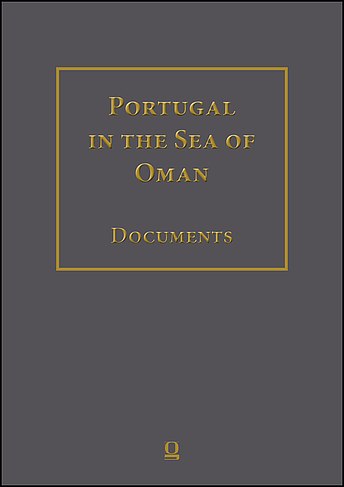Al Salimi | Jansen
Portugal in the Sea of Oman: Religion and Politics
ISBN 978-3-487-15271-4
englischThe Sultanate of Oman and Portugal are connected by a long shared history which until now has received little attention. After Vasco da Gama had rounded the Cape of Good Hope in 1498 and extended the Portuguese colonial empire to India, a constant conflict began between the two naval powers. In 1507 the Portuguese occupied the coast of Oman, remaining for a good hundred years until the united Omani tribes drove the Europeans from there and out of their East African possessions and became colonial rulers themselves. In 2004 a major research undertaking began on the initiative of the Omani Ministry for Foundations and Religious Affairs. The aim was to find documents in Portuguese archives which had as their subject the Sultanate of Oman and its cities and regions, and thus to record the encounter between the two cultures in the 16th century and their common history until the 18th century. Following publication of the 16-volume facsimile edition, the transcriptions of the old Portuguese manuscripts now follow, with translations into modern English and Arabic. The meticulous notes describe everyday life during the period as well as dramatic highlights such as the retaking of Muscat by the Imam of Nizwa in January 1650. The documents offer unexpected insights into the economic, religious and cultural relations between the two nations and the intensive interactions between East and West in the early modern age. The texts in the volume are arranged in three parallel columns so that the sections can be seen side by side. To supplement the critical textual controls made during the course of transcription each document can be seen in facsimile. This critical edition of the sources (1,500 documents on over 8,000 pages) offers both researchers and the general public for the first time a corpus of primary sources which is unique in its breadth and thematic focus. “Portugal in the Sea of Oman” is a scholarly treatment of archival material. It is a contribution to a better understanding of both eastern and western perspectives of each other.
Das Sultanat Oman und Portugal verbindet eine lange gemeinsame Geschichte, die bislang wenig Beachtung gefunden hat. Nachdem Vasco da Gama 1498 das Kap der Guten Hoffnung umrundet und das portugiesische Kolonialreich nach Indien ausgedehnt hatte, begann ein steter Konflikt zwischen den beiden großen Seemächten. 1507 besetzten die Portugiesen die omanische Küste für gut ein Jahrhundert, bis die vereinigten omanischen Stämme die Europäer Mitte des 17. Jhds. von dort und aus ihren ostafrikanischen Besitzungen vertrieben und selbst zu Kolonialherren wurden. Im Jahr 2004 begann auf Initiative des omanischen Ministeriums für Stiftungen und religiöse Angelegenheiten ein groß angelegtes Forschungsvorhaben. Ziel war es, in portugiesischen Archiven nach solchen Dokumenten zu suchen, die das Sultanat Oman und seine Städte und Ortschaften zum Gegenstand haben, und somit das Aufeinandertreffen der beiden Kulturen im 16. Jhdt. und ihre gemeinsame Geschichte bis ins 18. Jhdt. nachzuzeichnen. Nach der Veröffentlichung der 16-bändigen Faksimile-Edition folgen jetzt die jeweiligen Transkriptionen der altportugiesischen Handschriften und deren Übersetzungen ins moderne Englische und Arabische. Die minutiös geführten Aufzeichnungen beschreiben das damalige Alltagsleben, aber auch die dramatischen Höhepunkte wie die Rückeroberung Muscats im Januar 1650 durch den Imam von Nizwa. Es bieten sich ungeahnte Einblicke in die wirtschaftlichen, religiösen und kulturellen Beziehungen der beiden Nationen und damit auch in die intensiven Verquickungen zwischen Orient und Okzident in der Frühen Neuzeit. Der Textteil ist dreispaltig so organisiert, dass Transkription und Übersetzung parallel laufen. Zusätzlich kann jedes Dokument im Faksimile eingesehen werden. Mit dieser kritischen Quellenpräsentation (1500 Dokumente auf über 8000 Seiten) steht der Forschergemeinschaft wie auch der Öffentlichkeit zum ersten Mal ein Corpus an Primärquellen zur Verfügung, das in dieser Breite und thematischen Orientierung einmalig ist. „Portugal in the Sea of Oman“ ist die wissenschaftliche Aufbereitung von Archivmaterial. Es ist ein Beitrag zu einem besseren Verständnis für die jeweiligen Perspektiven auf Ost und West.


